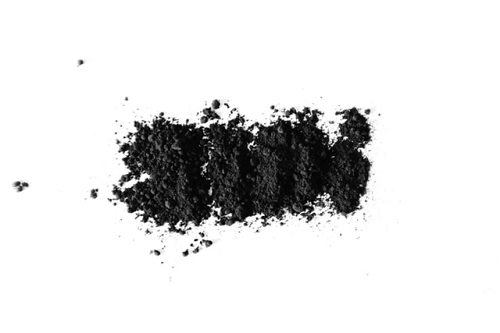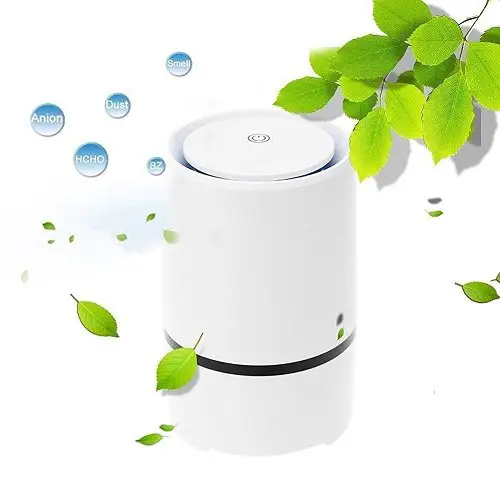Air purifiers remove odors from the air by running the air through their filters with a fan. A carbon or zeolite filter is required to trap the chemicals that produce odor. Air purifiers without these filters cannot remove odors.
Regular air purifiers do not normally have the ability to remove odors. They are designed to remove small particles from the air such as dust and pollen. Scent particles are extremely small particles that require specific types of filters to be removed from the air. Some air purifiers do have these types of filters. So if you want to purchase an air purifier that also removes bad smell, make sure it has one of the following filters.
What types of deodorization filters are required to remove odors?
There are three types of filters and mechanisms that can remove odors. These are:
- activated carbon
- zeolite
- ionizer
How does an activated carbon filter remove odor?
An activated carbon filter removes odors from the air by adsorbing the odor particles on the filter surface.
Activated carbon filters, also known as HEGA (High-Efficiency Gas Adsorption), make particles stick to its surface. This is called adsorption (the more commonly known absorption, written with a b instead of a d, works similar to a sponge). Adsorption (with a d), makes particles stick to its surface. Therefore, the larger the surface area, the more particles can be adsorbed.

What is activated carbon exactly?
Activated carbon filters are made from carbon. A more well known name for carbon is charcoal. This material is very effective at removing odors, but is also commonly used in cosmetics.
Activated carbon is ‘activated’ with a form of treatment that increases the surface area of the carbon. A larger surface area means that more particles can be removed. One gram of activated carbon has a surface area of about 3,000 m2 (32,000 sq ft). Because of this, an activated carbon filter can take up a lot of tiny smelly particles.
How does a zeolite filter remove odors from the air?
Zeolite is a mineral stone that has similar properties to activated carbon. It has many pores and holes and therefore has a very large surface area. This makes it capable of trapping odor particles in the same way as activated carbon does.
How does an ionizer help remove odors?
Ionizers emit ozone, a very reactive form of oxygen (O3 instead of O2) that reacts quickly with anything it comes into contact with. This technique can help remove particles and odors from the air. It makes particles easier to remove by other filters, or makes the particles stick to the floor or furniture, effectively removing them from the air.
Unfortunately, ionizers are not 100% safe to use as ionized particles can stick to our lungs the same way it sticks to air filters and surrounding objects. Therefore, the US Environmental Protection Agency (EPA) does not recommend the use of ionizers.
However, some air purifiers do use ionizers as they are effective at arresting airborne particles. Often these ionizers emit such a low amount of ozone that they are safe according to US or EU legislations.
Why do HEPA filters not remove odor?
HEPA or High-Efficiency Particulate Arrestance filters are designed to remove particles such as dust, pollen, and pet dander. They are not effective at removing odors. However, they might aid in reducing pet smell when they remove pet dander from your air.
What else is important for removing odor?
Next to the right filter, there are additional factors that determine the effectiveness of a purifier in removing odors. These aspects are the size of your room, the Air Changes per Hour (ACH) of the air purifier, and the Clean Air Delivery Rate of the purifier.

The importance of Air Changes per Hour (ACH)
The ACH is basically the speed of the device. It shows how long it takes for all the air in the room to have gone through the air purifier.
The ACH is based on the maximum recommended room size for your specific device. So if you have a larger room than mentioned on the packaging and manual, it will take longer for all the air to be cleaned. If the room is smaller, the room is cleaned quicker.
If you have a device that is suitable for your room size, the following applies. An ACH of 1 means that it takes the device 1 hour to clean all the air in your room. An ACH of 4 means it takes only 15 minutes since it cleans the room 4 times in one hour.
This of course only works if the device is used properly. So make sure you clean and replace the filters often. Additionally, the efficiency of the filters (how many particles are removed) determines if one full run of your purifier is sufficient to properly clean the air.
The importance of room size for air purifiers
In order to have clean air, all the air in the room needs to run through the filters of the air purifier. Therefore, next to the ACH, the size of the room is an important factor.
Usually, the manual or packaging of the air purifier mentions the maximum recommended room size. When you have a good enough purifier for your room (based on CADR, see below), the ACH is an excellent indication of the required run-time. If you want to read more about the required run time or need help with calculating the run-time, please read my article: How long should you run your air purifier?
The relation between the Clean Air Delivery Rate (CADR) and odor removal
The CADR rating shows how much air the device can clean in cubic feet per minute. However, this ‘clean’ air is based on the removal of airborne particles and is not related to odors. Therefore, the CADR rating is not the most reliable way of choosing an air purifier if you want to remove odors.
What does a good odor removing air purifier look like?
A good deodorizing air purifier does more than just remove odors. The things you should look out for are:
- a deodorization filter that is preferably not based on ionization. So either activated carbon or a zeolite filter
- an additional filter that helps with the removal of other airborne particles. HEPA filters are the current best particle filters and can aid in removing particles that can emit odor
- the air purifier needs to be fit for your room size. This is almost always clearly mentioned.
- the Air Changes per Hour (ACH) of the device. The higher the ACH, the faster it cleans the air
I gathered the best air purifiers for odor removal based on the criteria above.
These are the best air purifiers for odor removal
Based on the criteria above, I have created the following table of all the best air purifiers for odor removal. By clicking the purifier name in the table below, you can view the product on amazon.com.
| Air purifier | Why this purifier? | Room size | Activated carbon or Zeolite | Ionizer | HEPA filter | ACH | Extra | Cost (approximately) |
|---|---|---|---|---|---|---|---|---|
| GermGuardian AC4825E | High rated (amazon), cheap purifier | 167 sq. Feet (15.5) | Activated carbon | No | Yes | 4 | UV-light germ and mold killer | 83 dollars |
| Coway mighty | One of the most popular air purifiers available | 361 sq. Feet (33.5 m2) | Activated carbon | Yes, but can be turned off | Yes | Has fan speed options | Air Quality Indicator, Auto Mode, Eco Mode | 170 dollars |
| Levoit Core 300 | Amazon bestseller HEPA filter #1 | 219 sq. Feet (20 m2) | Activated carbon | No | Yes | 5 + has fan speed options | Filter replacement indicator, | 100 dollars |
| Coway Airmega 400 Smart | Smart purifier with many features and large area coverage | 1.560 sq. Feet (145 m2) | Activated carbon | No | Yes | 2 for 1560 sq. feet, 4 for 780 sq. feet | Shows air quality in a phone app. Adjusts speed based on measured air quality. Filter replacement indicator, | 519 dollars |

